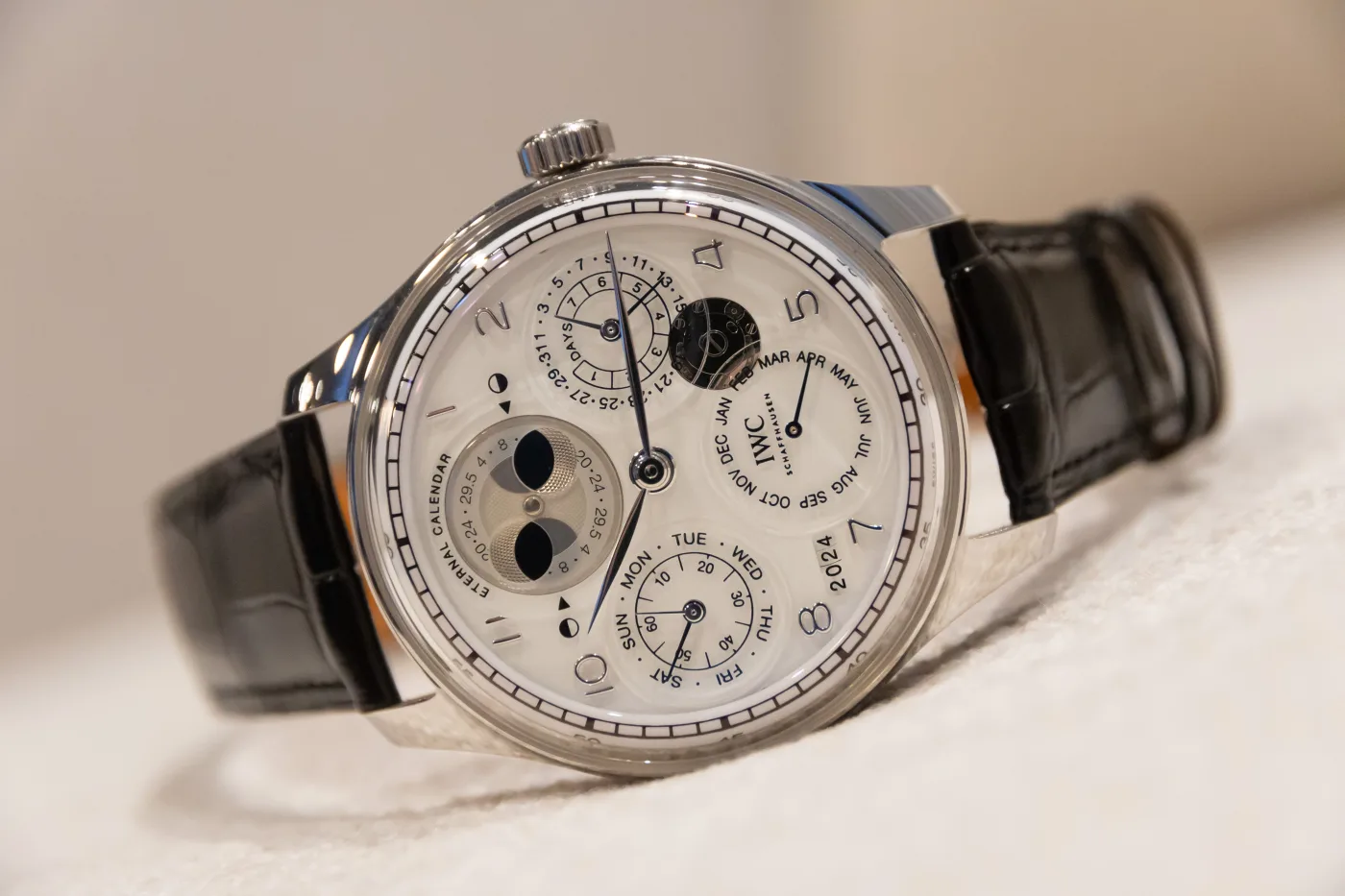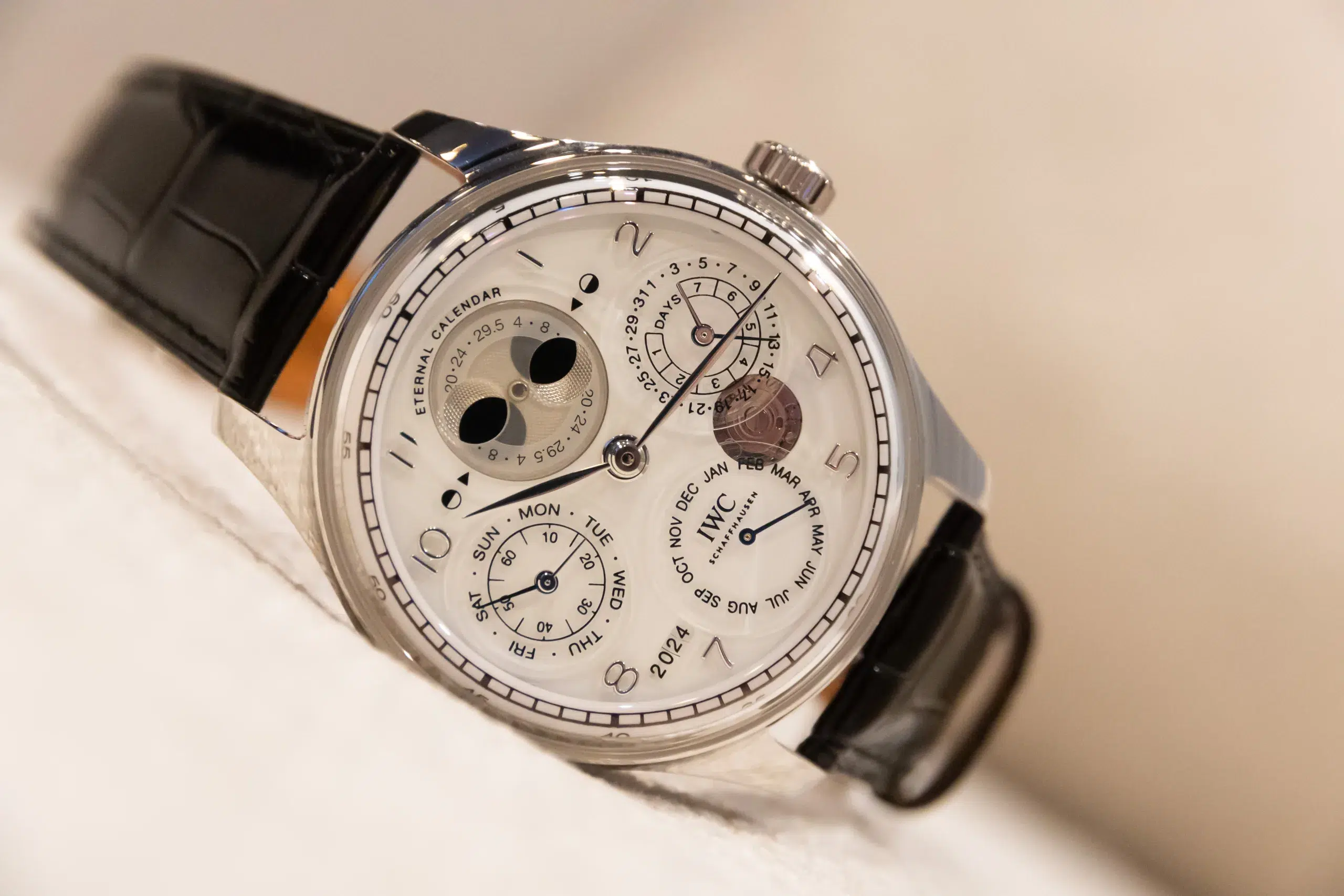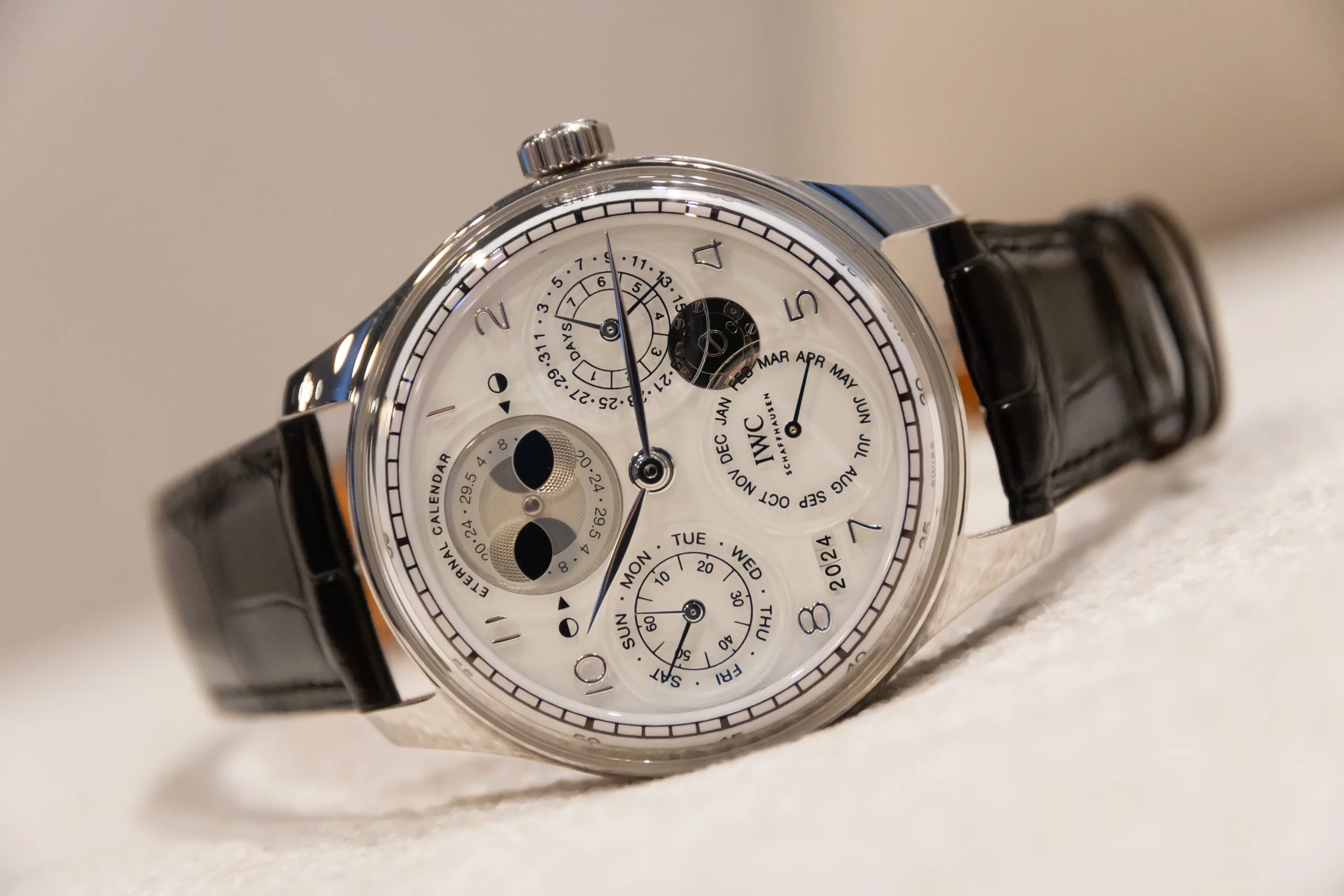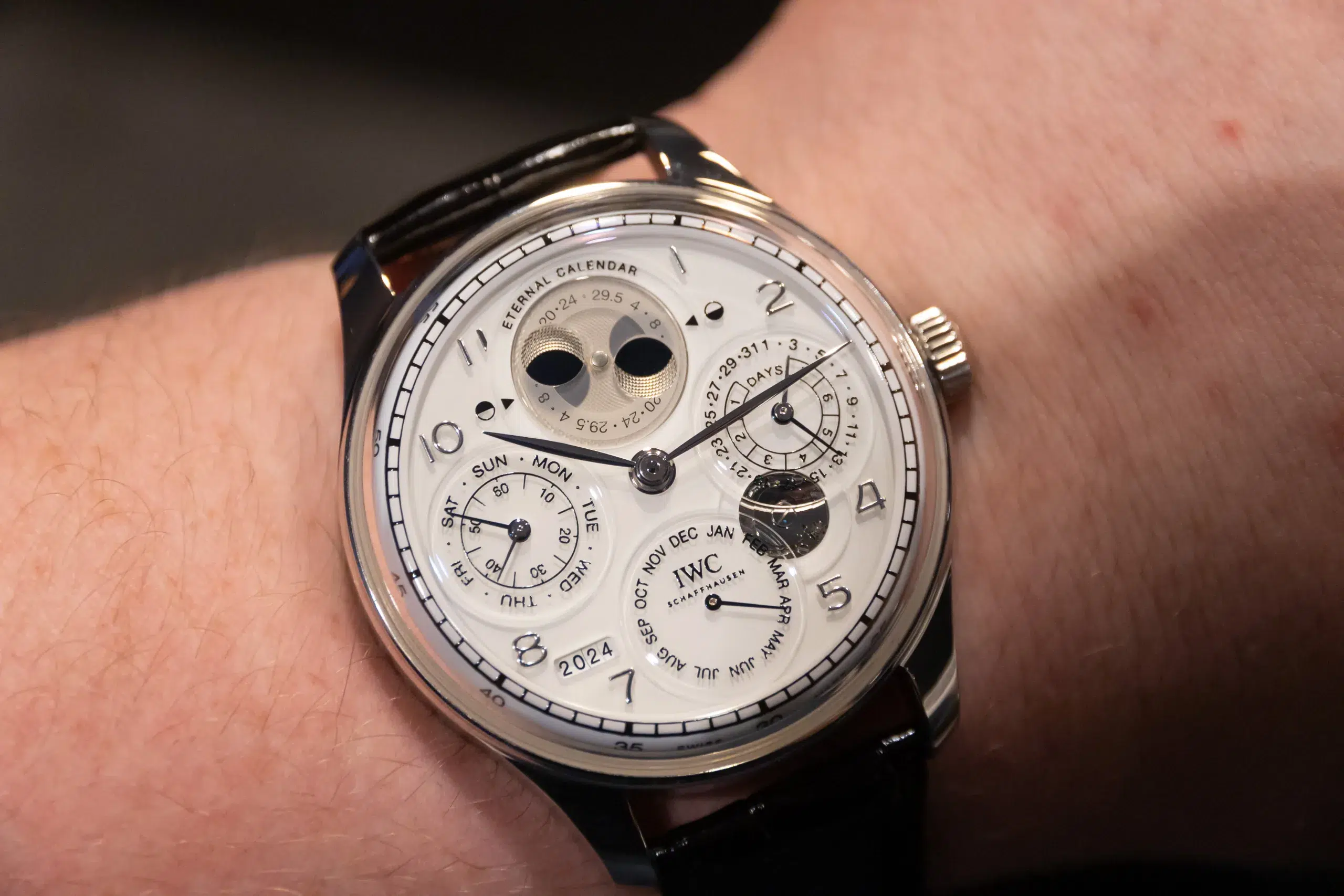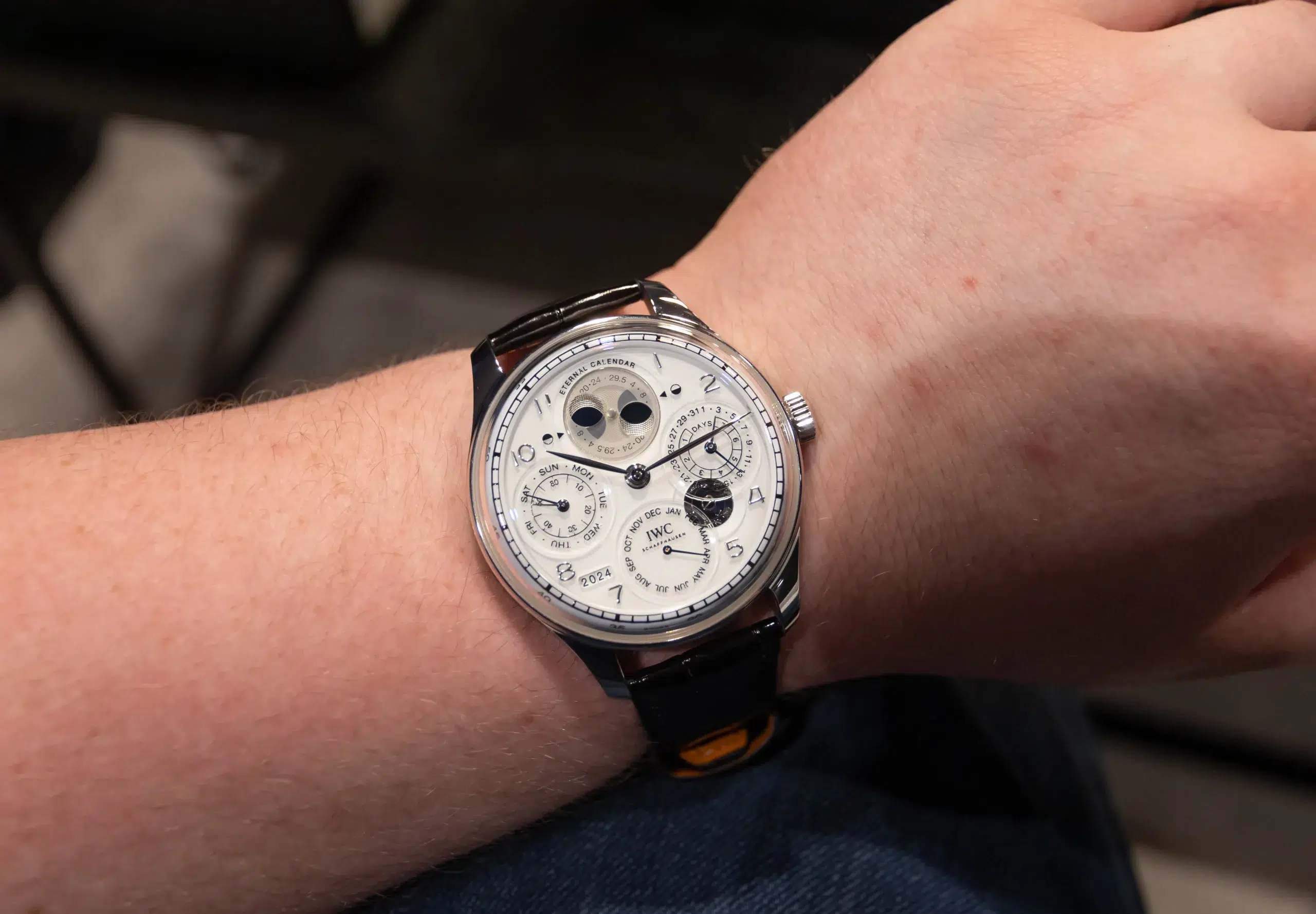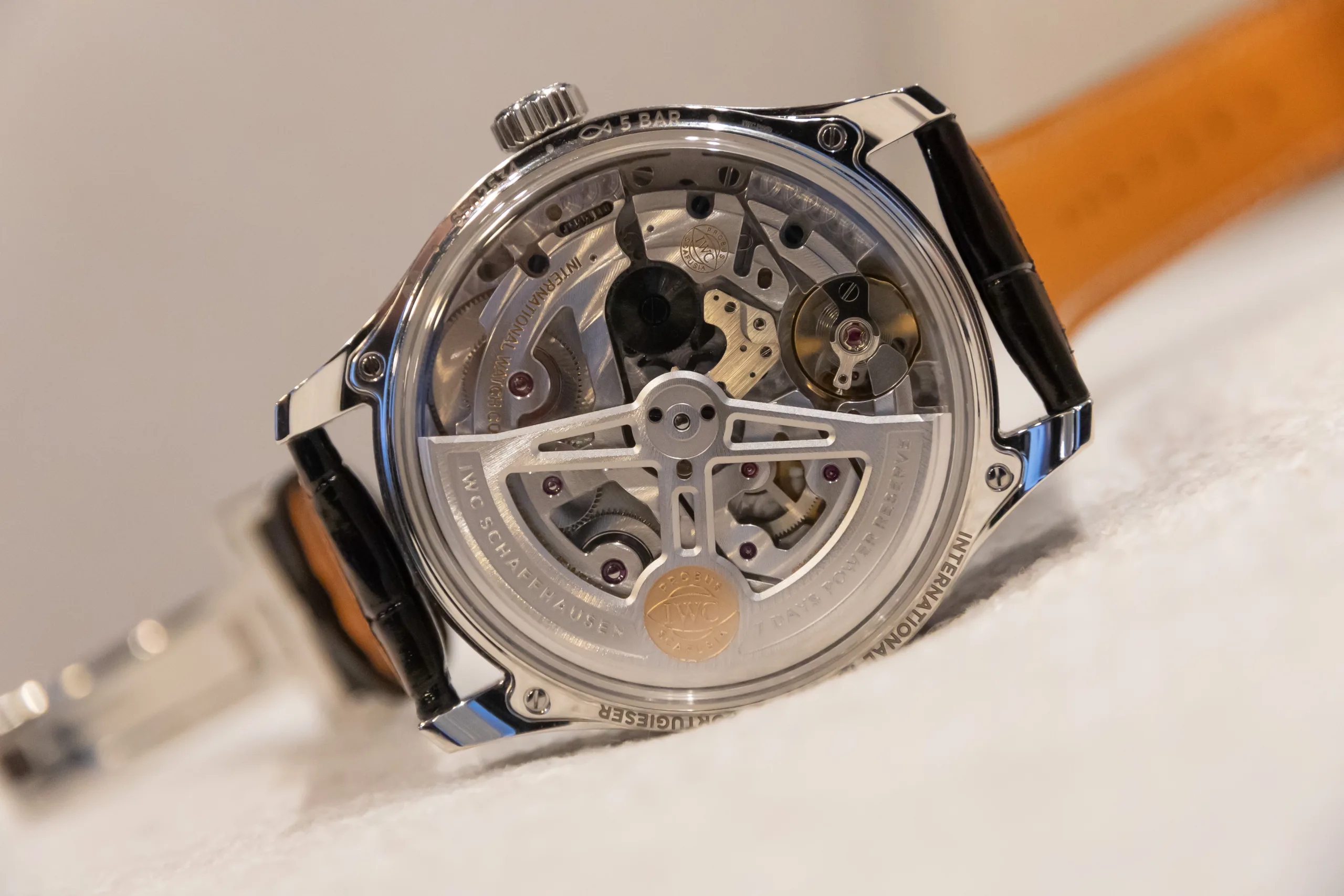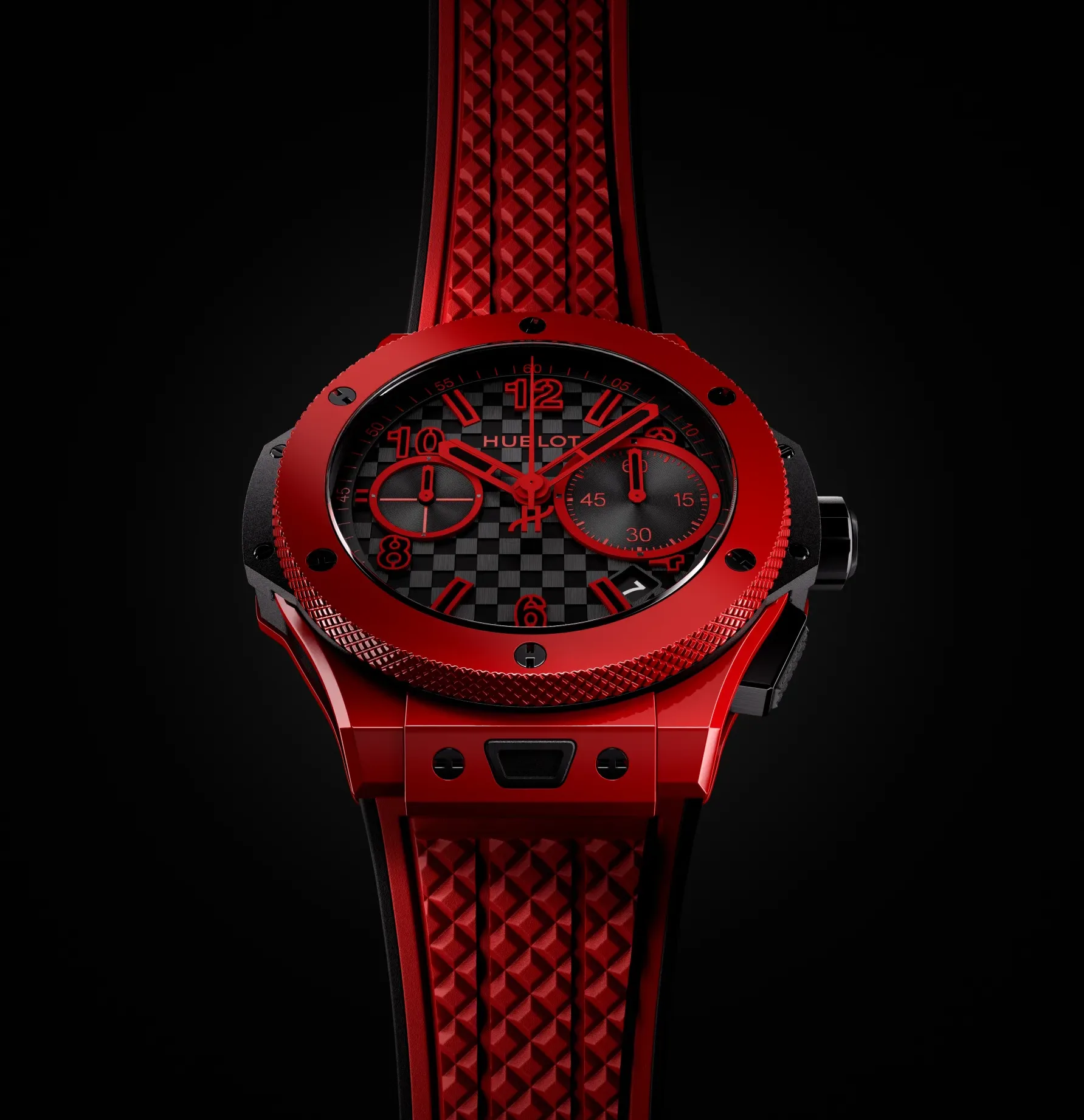BY HARLAN CHAPMAN-GREEN
IWC has been busy this past year working on many new timepieces. They added four new colourways to many of their Portugieser watches and introduced a whole new piece, which we’ll cover another time. For now, we’re looking at the main event from IWC’s new launch: their ‘tribute to eternity’ in the form of the Portugieser Eternal Calendar.
What we’re dealing with is an entirely new watch which happens to look like one of their very best pieces (in my opinion) which is the Portugieser Perpetual Calendar. These watches have been around for a while and always look cutting-edge. They have big cases with clear dials, a requirement for the amount of information they display. A perpetual calendar is a calendar which, thanks to some clever engineering design, knows the length of each month and adjusts itself accordingly. Unlike other calendar designs, a perpetual calendar also knows when a leap year is occurring and will change itself for that, too.
IWC’s new Portugieser Eternal Calendar goes one step further and joins an exclusive club of watches that contain a secular perpetual calendar. Due to a quirk of the Gregorian calendar that I don’t quite understand (but this website explains), centurial years with a number divisible by four (1600, 2000, etc.) are not leap years, but those without a number divisible by four (1900, 2100, etc.) are leap years. This, apparently, keeps our calendars mostly in line with the solar year, except for those pesky centurial years, which don’t have a number divisible by four. This is why perpetual calendar watches often say in their adverts they won’t need to be adjusted until 2100, because they are not able to understand that the year 2100 is not a leap year.
Thanks to yet more clever design, secular perpetual calendars are able to overcome this issue and will adjust themselves to accommodate the Gregorian calendar’s foibles. According to this article, the secular calendar typically overcomes this issue using extreme gear ratios, which means a wheel makes one revolution every 400 years, and some clever lever arrangements override the perpetual calendar mechanism when the time comes. Not many watchmakers have used a secular perpetual calendar in a watch, these include Patek Philippe in their 150th anniversary Calibre 89 supercomplication. You know, I think this topic deserves its own article at some point.
According to IWC, the moonphase of their new watch is so accurate that it will deviate from the correct time by one day every 45 million years. However, they admit that we’ll just have to take their word on that. Even so, this is one heck of an impressive watch and a testament to their determination to try and make something even better even if there isn’t really a reason to do so other than posterity.
What we end up with is quite magnificent. The Portugieser Eternal Calendar comes in a 44.4mm x 14.9mm 950 platinum case with a leather strap by Santoni. Like other IWC watches, the dial expands all the way to the very edge of the case to allow for maximum space and practically no bezel at all. We do have a domed crystal under which sits a domed dial with numbers falling over the edge with dramatic effect. That’s one of my favourite parts of this new design and Jaeger-LeCoultre has started doing it with its new Duomètre pieces. Perhaps it’ll be a theme across Richemont, like dark grey dials with pink gold cases. Water resistance is 50m.
Although the new Eternal Calendar is amazing, it’s also not something you can see in operation like a chronograph or a minute repeater. So, IWC changed out the dial for a stark white one and then made use of mostly opaque crystal to add depth and detailing. It’s striking to look at in person, and, annoyingly, it seems quite at home on my wrist; for a big watch, it sure is comfy.
Around the back is the calibre 52640, which, like the dial, expands right to the case edge. Despite the complicated calendar system (which includes a year display as well as the usual accoutrements), IWC hasn’t distracted itself too much from what we really want from a mechanical watch, which is practicality. This movement has a 4Hz beat rate and a seven-day (168-hour) power reserve.
It’s not a limited edition piece, thankfully, but I wouldn’t expect IWC to churn these out in a hurry, which I’m quite thankful for. Even if there isn’t a real need for a watch to be able to do this, I do appreciate that it exists and happens to look good while doing it. Hopefully we’ll see more watchmakers getting creative with the calendar complication in the future.
Price on application.

